Cellular Therapies and PRP
For high performance men over 50 looking to Reclaim Your Edge
For active women over 50 Looking to Rejuvenate and Revitalise
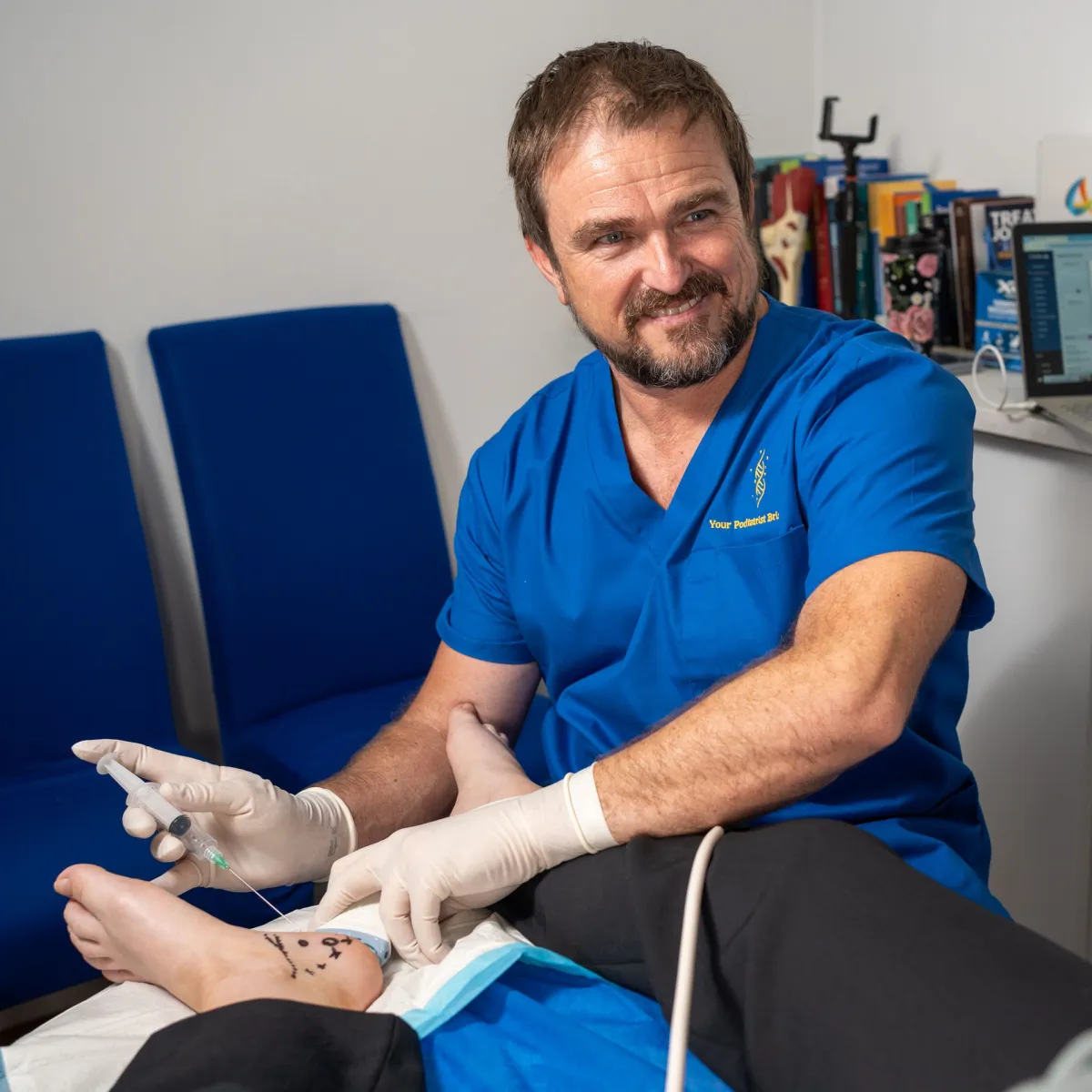
Are you seeking advanced, non-surgical options to treat joint pain, arthritis, or soft tissue injuries?
Regenerative cellular therapies offer innovative solutions that utilise your body's own healing mechanisms. This brochure introduces three cutting-edge treatments:
Platelet-Rich Plasma (PRP)
Bone Marrow Aspirate Concentrate (BMAC)
Micro-Fragmented Adipose Tissue (MFAT)
Discover how these therapies work and their potential benefits in promoting healing and restoring function.
Platelet-Rich Plasma (PRP)
What is PRP?
PRP therapy involves concentrating platelets from your blood and injecting them into injured tissues to promote healing.
How Does It Work?
Growth Factors: Platelets release proteins that stimulate cell proliferation and tissue regeneration.
Healing Cascade: Enhances the body's natural healing processes at the site of injury.
Applications
Joint Pain: Effective for mild to moderate osteoarthritis.
Soft Tissue Injuries: Commonly used for tendonitis, ligament sprains, and muscle strains.
Benefits
Safe and Natural: Uses your own blood components.
Reduced Inflammation: Helps decrease swelling and pain.
Improved Function: Aims to restore mobility and strength.
The Procedure
Blood Draw: A small amount of blood is drawn from your arm.
Centrifugation: The blood is spun to separate and concentrate the platelets.
Injection: PRP is injected into the injured area, often guided by ultrasound.
Bone Marrow Aspirate Concentrate (BMAC)
What is BMAC?
BMAC is a regenerative therapy that involves extracting bone marrow from your own body, concentrating the cellular components, and injecting them into the injured area.
How Does It Work?
Cellular Concentration: Bone marrow contains mesenchymal stem cells (MSCs) and growth factors that aid in tissue repair.
Targeted Healing: Injecting concentrated cells into the damaged tissue stimulates regeneration and reduces inflammation.
Applications
Joint Pain and Arthritis: Particularly effective for osteoarthritis in knees, hips, and shoulders.
Soft Tissue Injuries: Helps repair damaged tendons, ligaments, and cartilage.
Benefits
Non-Surgical: Minimally invasive alternative to joint replacement or surgery.
Natural Healing: Utilises your body's own cells, reducing the risk of rejection.
Pain Reduction: Aims to decrease pain and improve joint function.
The Procedure
Extraction: Bone marrow is typically harvested from the pelvic bone under local anesthesia.
Processing: The marrow is processed to concentrate the regenerative cells.
Injection: The concentrate is injected into the affected area under image guidance.
Micro-Fragmented Adipose Tissue (MFAT)
What is MFAT?
MFAT therapy uses your body's own fat tissue, processed to obtain micro-fragments rich in regenerative cells, which are then injected into damaged areas.
How Does It Work?
Adipose-Derived Cells: Fat tissue contains a high concentration of mesenchymal stem cells and growth factors.
Tissue Regeneration: Promotes healing by reducing inflammation and encouraging new tissue growth.
Applications
Joint Degeneration: Beneficial for arthritis and degenerative joint conditions.
Soft Tissue Repair: Assists in healing tendons, ligaments, and muscle injuries.
Benefits
Minimally Invasive: Requires only small incisions for fat harvesting.
Autologous Treatment: Uses your own tissue, minimising risk of adverse reactions.
Enhanced Healing: Aims to accelerate recovery and improve tissue function.
The Procedure
Harvesting: Small amounts of fat are collected from areas like the abdomen or thighs using liposuction techniques.
Processing: The fat is mechanically processed to create micro-fragments.
Injection: The MFAT is injected into the target area under ultrasound guidance.
Comparing the Therapies
Aspect
Source
BMAC
Bone Marrow
MFAT
Adipose (fat) tissue
PRP
Blood
Key components
Invasiveness
Ideal for
Recovery time
Stem cells, growth factors
Minimally invasive
Severe joint issues
Short downtime
Stem cells, growth factors
Minimally invasive
Moderate joint/soft tissue injuries
Short downtime
Platelets, growth factors
Least invasive
Mild to moderate injuries
Minimal downtime
Aspect:
Bone
Source
Marrow
Key components
Stem cells, growth factors
Invasive-
ness
Minimally invasive
Ideal
For
Severe joint issues
Recovery Time
Short Downtime
Aspect:
MFAT
Source
Adipose (fat) tissue
Key components
Stem cells, growth factors
Invasive-
ness
Minimally invasive
Ideal
For
Moderate joint/soft tissue injuries
Recovery Time
Short Downtime
Aspect:
PRP
Source
Blood
Key components
Platelets, growth factors
Invasive-
ness
Least invasive
Ideal
For
Mild to moderate injuries
Recovery Time
Minimal Downtime
Who Can Benefit?
Individuals with Joint Pain or Arthritis: Seeking alternatives to surgery for osteoarthritis or degenerative joint diseases.
Athletes and Active Individuals: Looking for effective treatments for sports-related injuries.
Patients with Soft Tissue Injuries: Such as tendonitis, ligament sprains, or muscle tears.
Safety and Considerations
Medical Evaluation: A thorough assessment is necessary to determine suitability.
Possible Side Effects:
Injection Site Reactions: Mild pain, swelling, or bruising.
Infection Risk: Low but possible; procedures are performed under sterile conditions.
Not Suitable For:
Individuals with certain blood disorders or cancers.
Patients with active infections.
What to Expect During Treatment
Initial Consultation:
Discuss medical history, symptoms, and treatment goals.
Procedure Day:
Preparation: Local anaesthesia may be used.
Duration: Procedures typically take 1-2 hours
Post-Procedure Care:
Activity: Limited activity for a few days; gradual return to normal routines.
Follow-Up: Regular appointments to monitor progress.
Benefits of Regenerative Therapies
Reduced Pain and Inflammation
Improved Joint Function and Mobility
Accelerated Healing Process
Decreased Need for Medications
Potential Delay or Avoidance of Surgery
Long-Term Benefits
PRP and regenerative therapies not only provides relief and accelerated healing but also promotes long-term health benefits. Regular treatments can maintain joint health, reduce chronic pain, and enhance overall physical performance. By incorporating PRP into your health regimen, you can ensure that you remain active and vibrant well into your later years.
Why Should High-Performance Men and Active Women Over 50 Consider PRP?
1. Joint and Muscle Pain Relief
As we age, joint and muscle pain can become more common, especially for those maintaining an active lifestyle.
PRP therapy can reduce inflammation, alleviate pain, and improve joint function, helping you stay active and pain-free.
2. Accelerated Recovery from Injuries
High-performance activities increase the risk of injuries like tendinitis, sprains, and muscle tears.
PRP accelerates the healing process, reducing recovery time and helping you return to your peak performance sooner.
3. Enhanced Athletic Performance
Regular PRP treatments can help maintain your body’s optimal function, keeping you at the top of your game.
By promoting faster recovery and reducing downtime, PRP ensures you can train harder and more consistently.
4. Natural and Safe
PRP uses your own blood, minimising the risk of allergic reactions or infections.
It’s a minimally invasive procedure with little to no side effects, making it a safe choice for ongoing treatment.
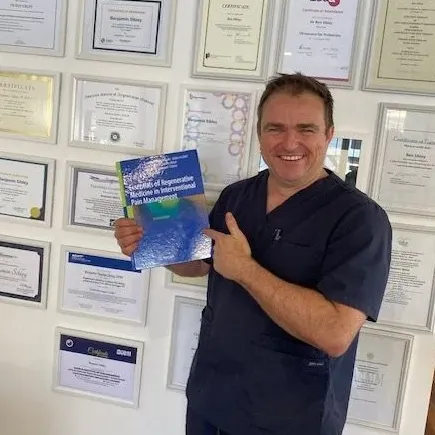
Consultation and Next Steps…
Embarking on Cellular therapies and PRP begins with a personalised consultation:
Assessment: Understanding your medical history, current condition, and treatment goals.
Discussion: Exploring the potential benefits and any risks associated with the therapy.
Planning: Developing a customized treatment plan tailored to your specific needs.
Platelet-Rich Plasma (PRP)
1. Dai, W., Leng, X., Wang, J., & Zeng, C. (2021)
Title: Efficacy of Platelet-Rich Plasma in the Treatment of Knee Osteoarthritis: A Meta-analysis of Randomized Controlled Trials.
Journal: Arthroscopy: The Journal of Arthroscopic & Related Surgery, 37(1), 309-325.
Summary: This meta-analysis of RCTs concluded that PRP injections significantly improved pain and function in patients with knee osteoarthritis compared to placebo and hyaluronic acid injections.
2. Belk, J. W., Kraeutler, M. J., Houck, D. A., et al. (2021)
Title: Platelet-Rich Plasma Versus Hyaluronic Acid for Knee Osteoarthritis: A Systematic Review and Meta-analysis of Randomized Controlled Trials.
Journal: The American Journal of Sports Medicine, 49(1), 249-260.
Summary: The study found that PRP was more effective than hyaluronic acid in reducing pain and improving function in knee osteoarthritis patients over short- and mid-term follow-ups.
3. Lin, K.-Y., Yang, C.-C., Hsu, C.-J., et al. (2022)
Title: Intra-articular Injection of Platelet-Rich Plasma Is Superior to Hyaluronic Acid or Saline Solution in the Treatment of Mild to Moderate Knee Osteoarthritis: A Randomized, Double-Blind, Triple-Paralleled Controlled Trial.
Journal: The Knee, 35, 86-97.
Summary: PRP injections provided significantly better outcomes in pain reduction and functional improvement than hyaluronic acid or saline solution in patients with mild to moderate knee osteoarthritis.
4. Chen, P., Huang, L., Ma, Y., et al. (2020)
Title: Intra-articular Platelet-Rich Plasma Injection for Knee Osteoarthritis: A Summary of Meta-analyses.
Journal: Journal of Orthopaedic Surgery and Research, 15(1), 324.
Summary: This comprehensive review of RCTs supports the efficacy of PRP in alleviating symptoms and improving joint function in knee osteoarthritis.
5. Zhe, L., Dan, Y., & Wei, Y. (2021)
Title: Platelet-Rich Plasma Versus Corticosteroids for Plantar Fasciitis: A Systematic Review of Randomized Controlled Trials.
Journal: The American Journal of Sports Medicine, 49(5), 1381-1393.
Summary: PRP injections were found to be more effective and provided longer-lasting pain relief than corticosteroid injections in treating plantar fasciitis.
Bone Marrow Aspirate Concentrate (BMAC)
1. Hernigou, P., Bouthors, C., Filippini, P., et al. (2021)
Title: Subchondral Bone Marrow Concentrate Transplantation for Severe Osteoarthritis of the Knee: Five Year Follow-up of a Randomized Placebo-Controlled Trial.
Journal: International Orthopaedics, 45(1), 209-216.
Summary: BMAC injections into subchondral bone led to significant improvements in pain and function compared to placebo, with effects lasting over five years.
2. Kim, S.-J., Koh, Y.-G., Lee, S., et al. (2022)
Title: Comparative Matched-Pair Analysis of Bone Marrow Aspirate Concentrate and Microfracture in the Treatment of Osteochondral Lesions of the Talus.
Journal: The American Journal of Sports Medicine, 50(3), 650-659.
Summary: Patients treated with BMAC showed superior clinical outcomes and imaging results compared to microfracture alone in repairing osteochondral lesions.
Micro-Fragmented Adipose Tissue (MFAT)
1. Gobbi, A., Dallo, I., & Kumar, A. (2021)
Title: Long-Term Results After Microfragmented Adipose Tissue Injection Treatments in Grade II and III Osteoarthritis of the Knee.
Journal: The Journal of Arthroscopic and Related Surgery, 37(4), 1155-1163.
Summary: MFAT injections provided significant pain relief and functional improvement in patients with knee osteoarthritis, with benefits lasting up to three years.
2. Bianchi, F., Maioli, M., Leonardi, E., et al. (2020)
Title: A Prospective Randomized Controlled Clinical Trial Comparing Microfragmented Fat Tissue Versus PRP for the Treatment of Symptomatic Knee Osteoarthritis.
Journal: Stem Cells International, 2020, 1-10.
Summary: The study found that MFAT was more effective than PRP in reducing pain and improving joint function in knee osteoarthritis patients at six months follow-up.
Combination Therapies
1. Hudetz, D., Borić, I., Rod, E., et al. (2022)
Title: Early Clinical Outcomes of Combined Microfracture and Autologous Microfragmented Adipose Tissue in the Treatment of Osteochondral Lesions of the Knee: A Randomized Controlled Trial.
Journal: Genes, 13(2), 289.
Summary: Combining MFAT with microfracture surgery resulted in better clinical outcomes and cartilage repair compared to microfracture alone in patients with knee osteochondral lesions.
Disclaimer: This website is for informational purposes only and does not constitute medical advice. Consult with a licensed healthcare professional before starting any new treatment.

5-Stars on Google
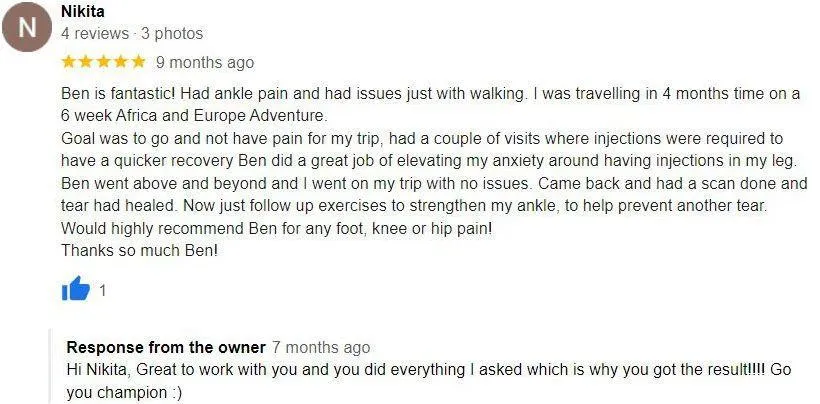

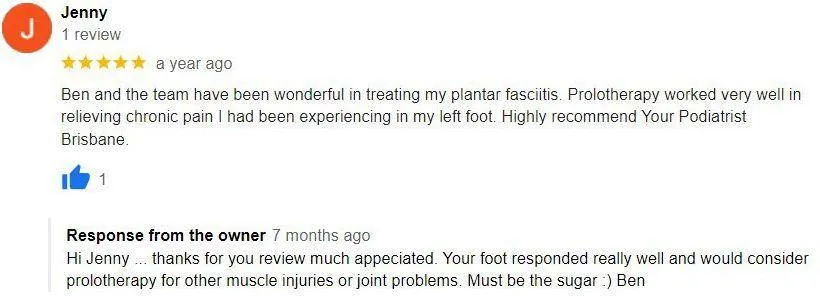


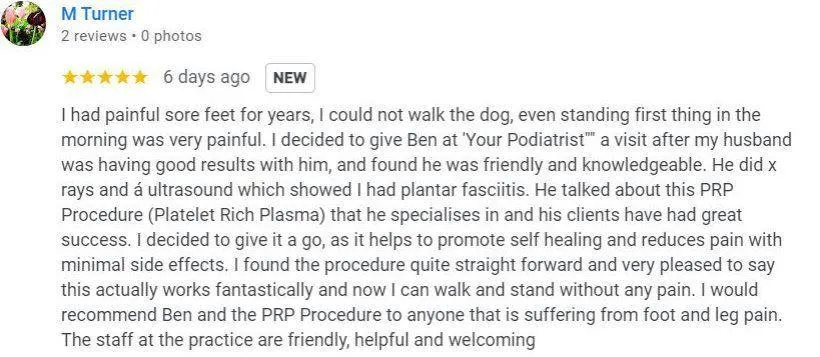
Your Podiatrist Brisbane
Phone: (07) 5495 6437
Email: [email protected]
Address:
7 Blue Gum Terrace
Caboolture South QLD 4510
What to Expect…
Prior to your first initial consultation, you will be required to complete an introductory 15 minute phone call. This will give you more details and information and to ensure that you have no contra-indications and make sure we can help you. If we feel we’d be a great fit for each other, we will schedule your in office detailed and comprehensive appointment with one of our doctors.
Copyright 2025 © yourpodiatristbrisbane.com | Terms and Conditions | Legal | Cookies | Privacy
